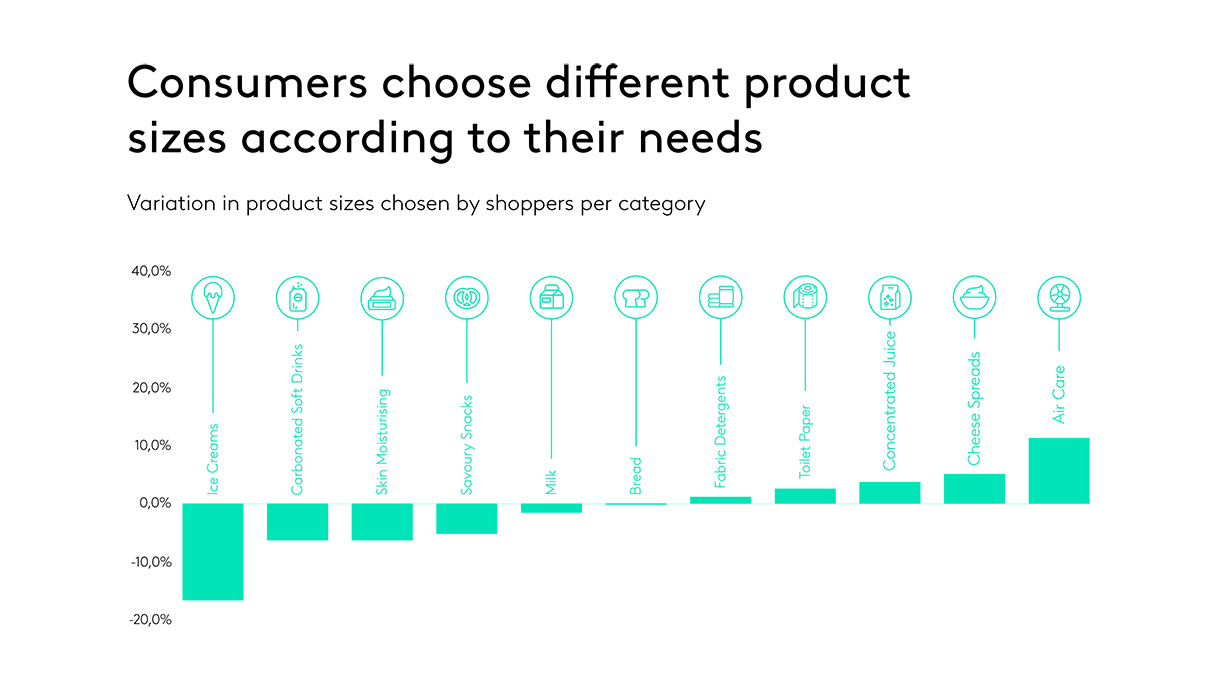At a time when the phenomenon of shrinkflation – also known as reduflation – is the order of the day, a new Worldpanel study has revealed the behaviours adopted by Latin Americans to balance their household spending as the trend takes hold.
Shrinkflation is a strategy deployed by manufacturers to reduce the size of packaging in response to rising inflation, with the goal of maintaining average prices and preventing consumers from abandoning brands in search of a cheaper option. This raises production costs, and reduces consumers' purchasing power.
In Latin America, 60% of all the FMCG categories that are growing in volume now come in smaller packages compared to the previous year. This indicates that the strategy can be effective in encouraging shoppers to buy, especially in food and beverage segments.
 Ice cream is the product that has shrunk the most, with an average decrease of 17% in units bought compared to a year ago. Other categories, such as powdered milk, soft drinks, biscuits and snacks, are also being chosen in smaller packages. These products have something else in common: they all have a higher purchase frequency.
Ice cream is the product that has shrunk the most, with an average decrease of 17% in units bought compared to a year ago. Other categories, such as powdered milk, soft drinks, biscuits and snacks, are also being chosen in smaller packages. These products have something else in common: they all have a higher purchase frequency.
In the opposite direction, consumers are taking home larger packs of some categories, such as air fresheners, yogurt, concentrated juices, femcare and laundry detergent. This trend is mostly seen in personal and home care categories, which can offer greater durability and a lower price per weight or unit.
The place where shoppers buy the product also influences the variation in package size. For example, feminine pads have increased in both purchase frequency and product size in wholesalers. Consumers in Latam are looking for opportunities to save money, and are willing to switch to smaller products where replenishment is more frequent. In our latest video, we explore the factors that influence these choices. Watch the video, and use the insights in your strategic planning, to navigate the market with a more nuanced perspective.


